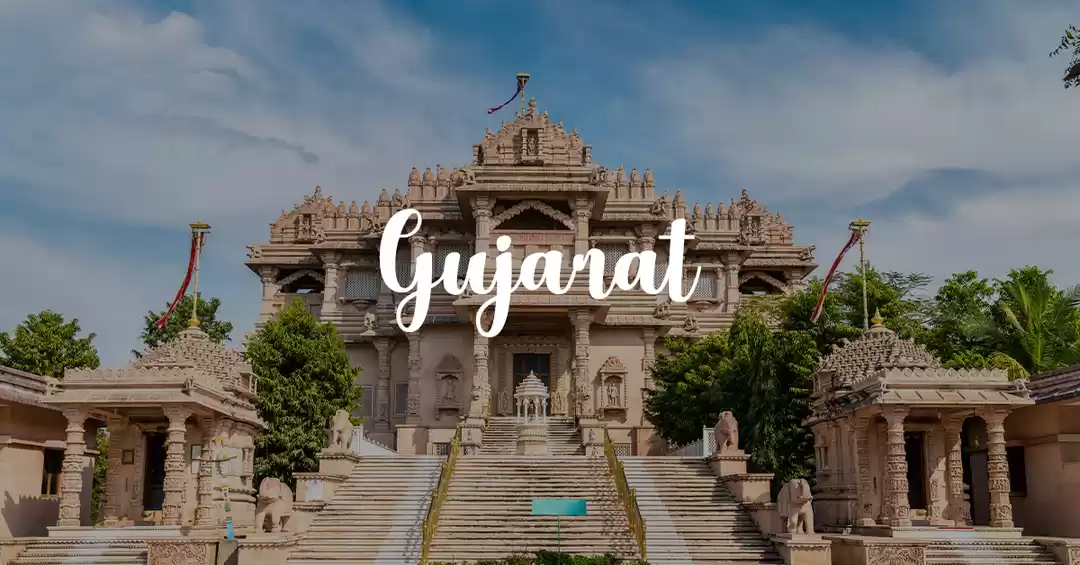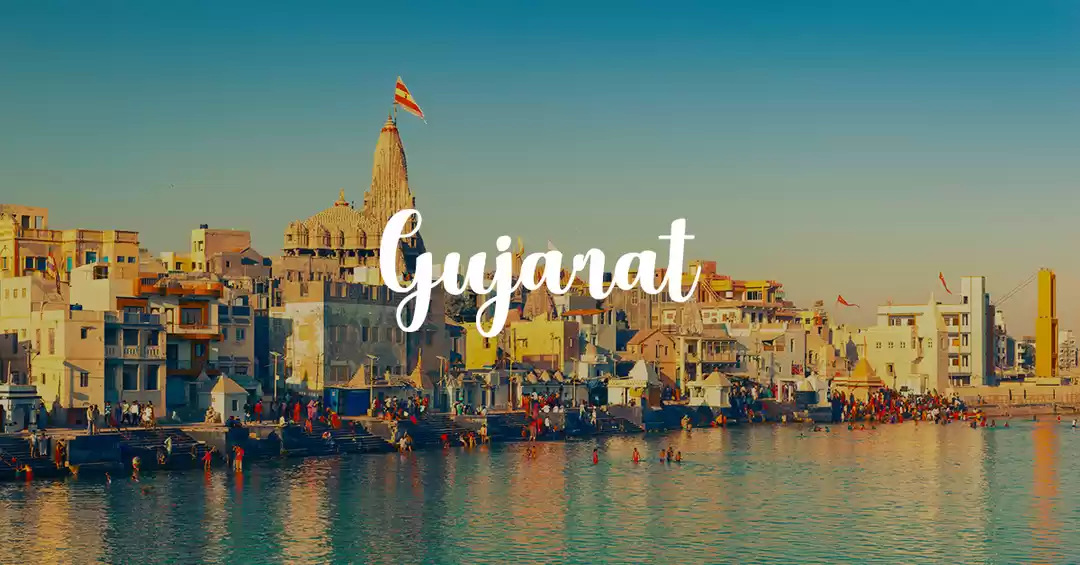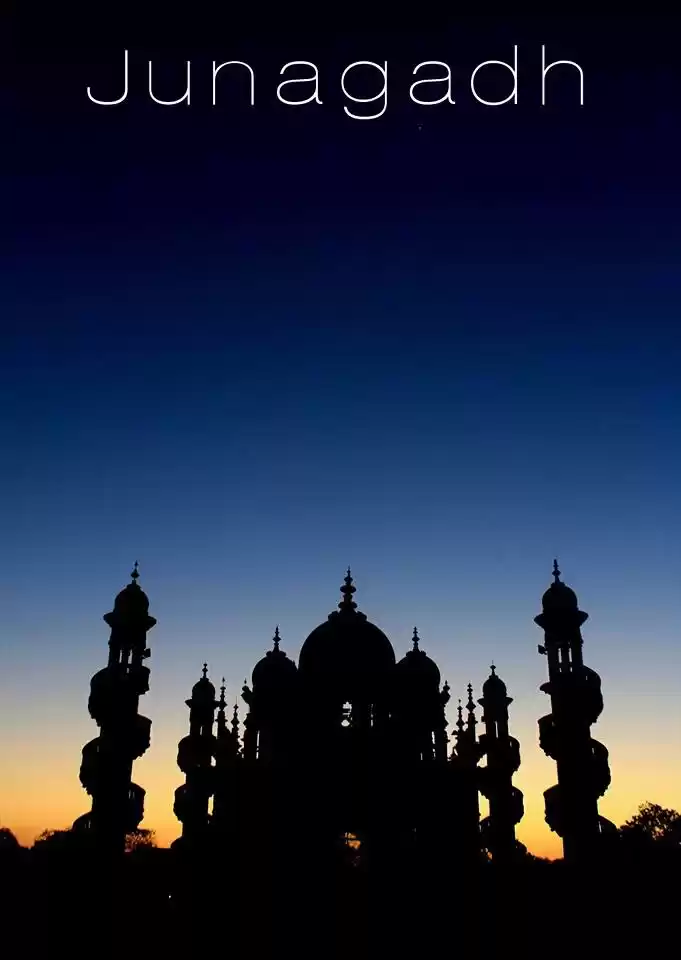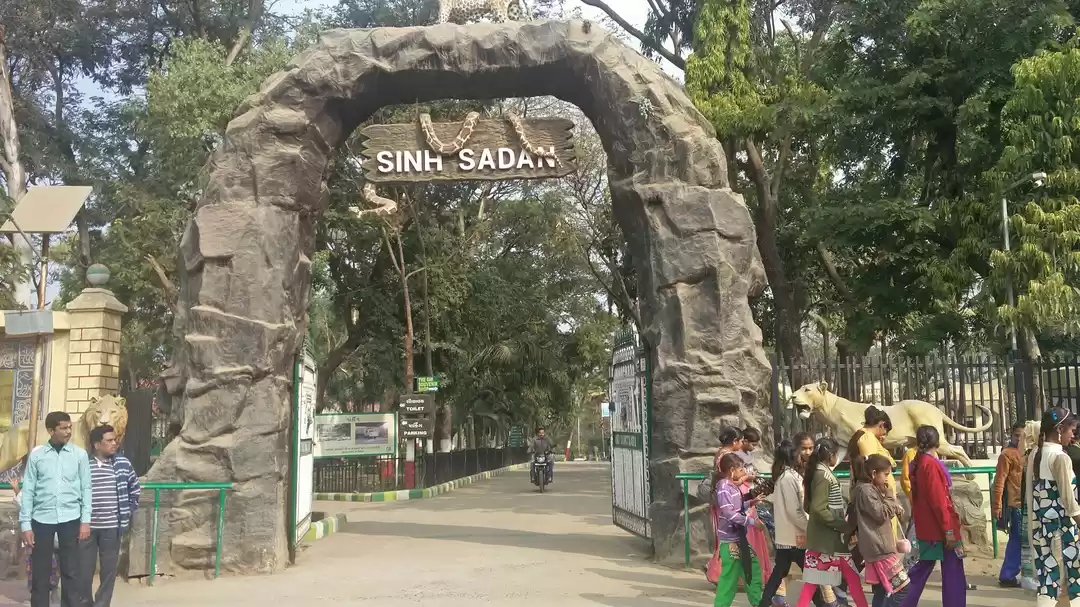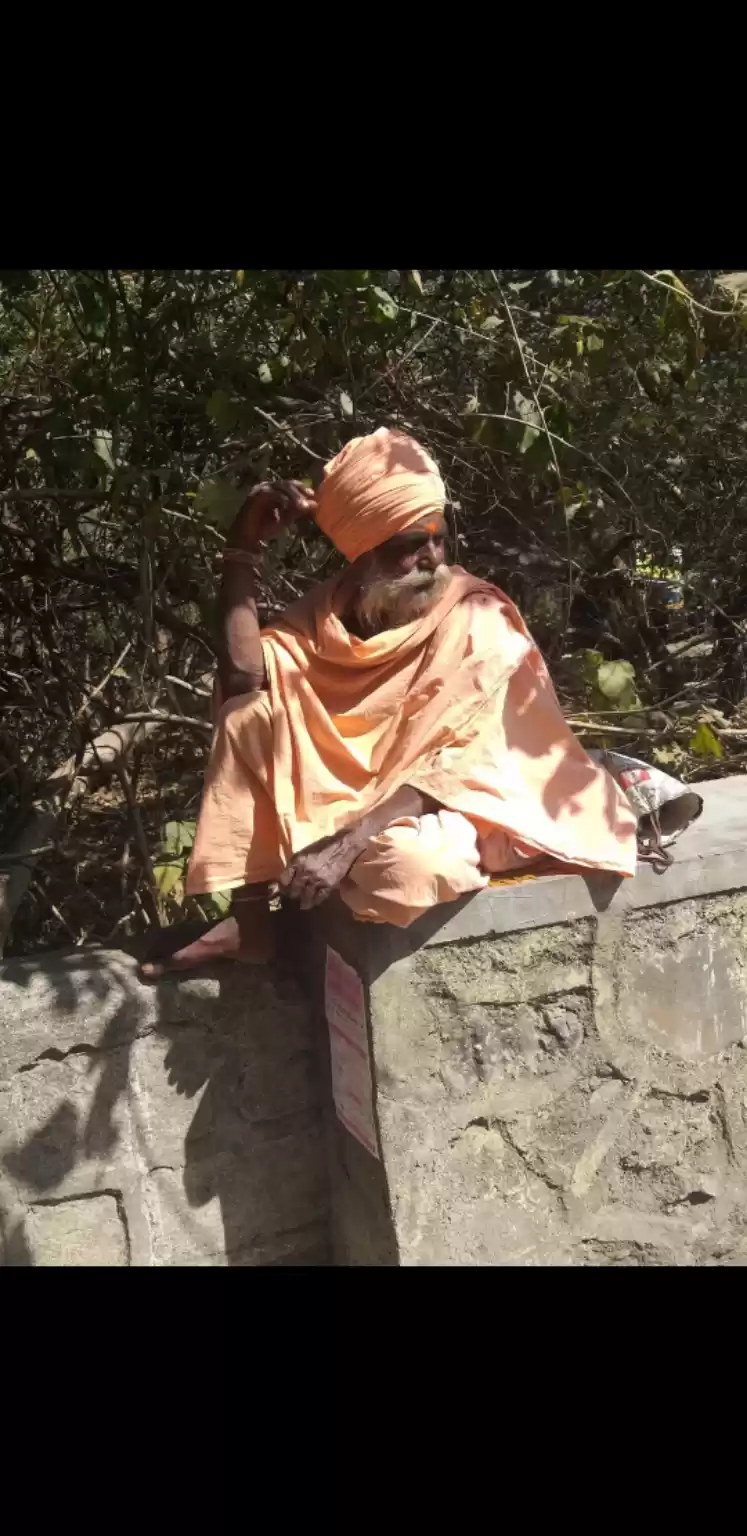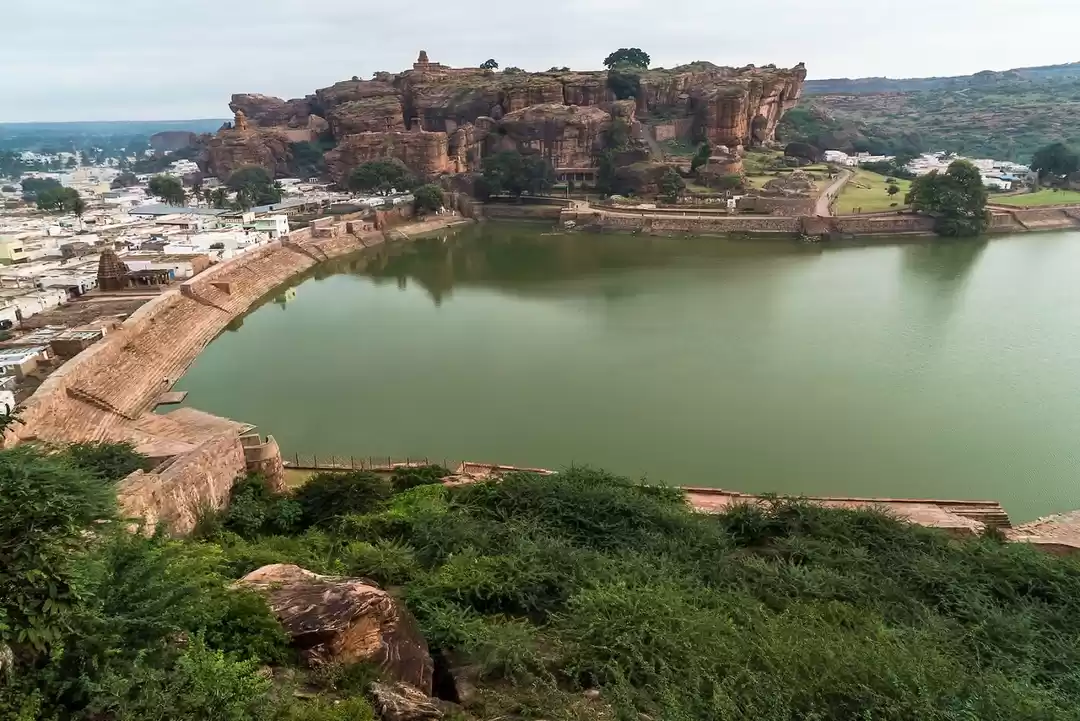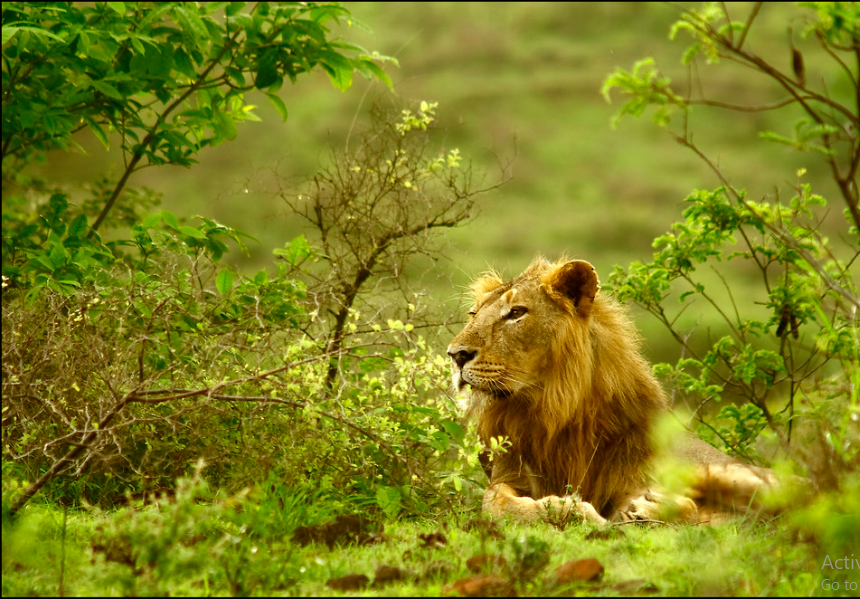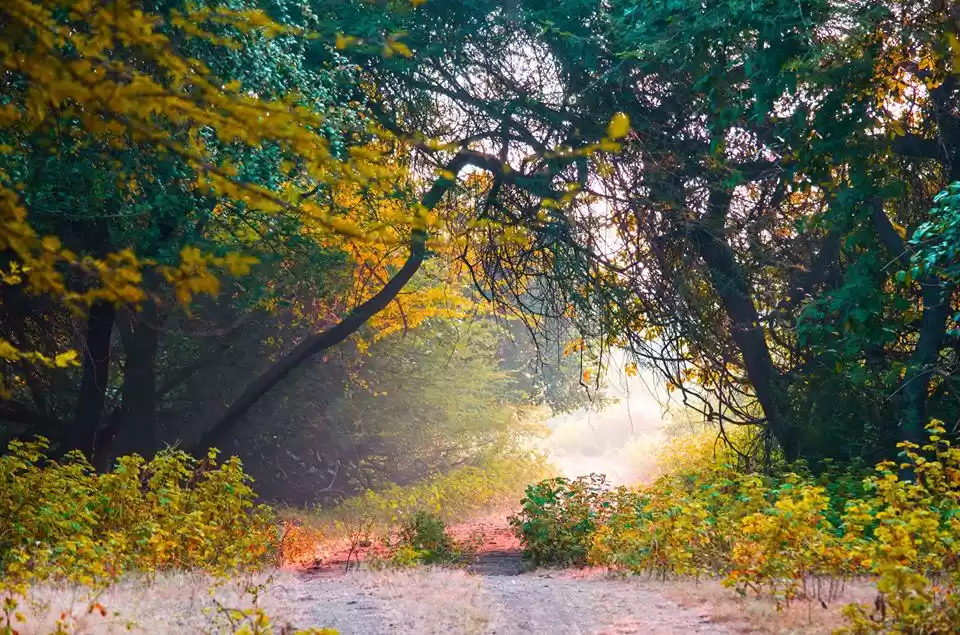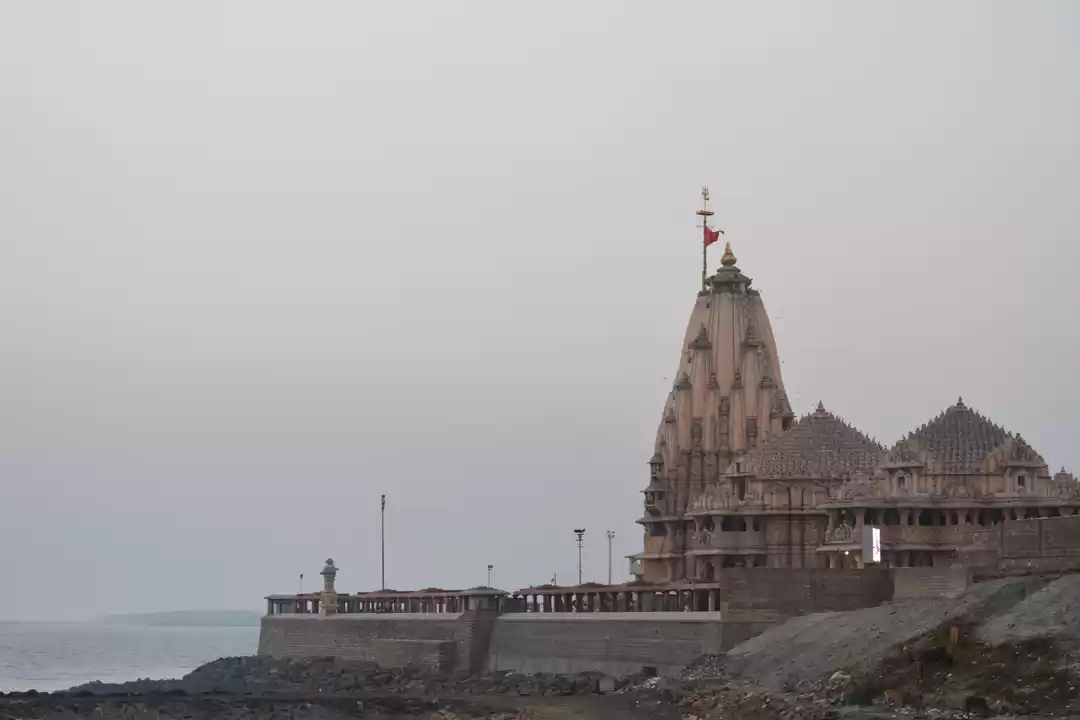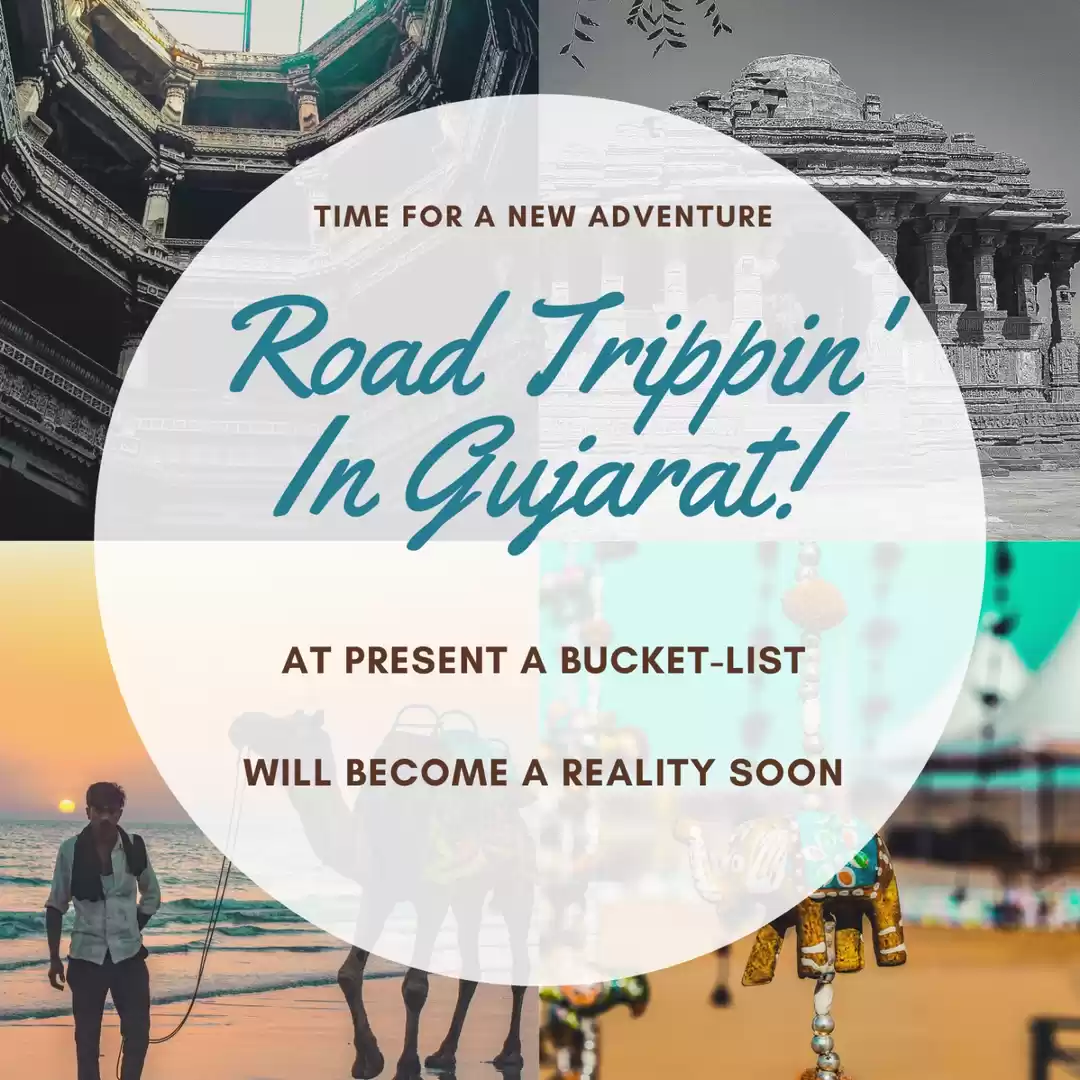
On Day 7 of our Gujarat road-tour, my friend Sheela and I drove from Diu to Junagadh via Sasan Gir, the last abode of the wild Asiatic Lion. It was a pleasant journey. There were dry bushes and trees on either side of the road for miles and miles. It was mid-day and we were pretty sure the lions would be sleeping, somewhere safely hidden from public view. It was really hot and we were in no mood to take a noon safari, so we only stopped to take a few pictures on the road.


En route to Sasan Gir we passed an African village, where everyone looked 100% African. Our cab driver, Solankhi, told us that the Nawab of Junagadh had brought some Africans (as bodyguards?) and settled them here once upon a time, and the present residents are their descendants. When we stopped for tea, Solankhi introduced us to a little boy named Basha, who was studying in the eighth standard. He was hanging out with two other Indian boys. Sheela (being a retired maths teacher) asked the boys why they weren’t in school. Pat came the reply, “Aaj chutti hai,” (Today is a holiday). “Why?” we questioned. “Because the teacher is sick or something,” Basha lied glibly. We told the boys we didn’t believe them.
It was sad to see a whole lot of youngsters staying away from school. Perhaps they didn’t see any point in attending. They may even have better things to do outside school. The reason soon became obvious. When I stepped into a nearby shop to buy a lion T-shirt, the two Indian boys followed me inside, and they were the ones who did the selling. Their marketing skills were admirable. They described the features of their products with great enthusiasm. When I asked where the T-shirts were made, they replied, “Thailand”. The only adult in the shop was a man sitting at the cash counter. It seemed as though child labour was the rule rather than the exception. So much for the Gujarat model of development!
In Junagadh we saw the Ashokan edict, the Girnar Hill, the Uperkot Fort, and the temple where the naked sadhus hang out. Mohabbat Maqbara and the adjoining building were closed for maintenance. The Museum and the Sakkarbag Zoo were closed as it was Wednesday. However, the Ashoka edict and the Buddhist caves at Khapra Khodiya were enough to fill my heart. Solankhi had earlier warned us not to enter the hangout of the Aghori babas (naked ascetics) unless there were other tourists in the place. They are invariably high on bhang and one cannot predict their behavior, although the truth is that a great majority of them are harmless. There is no doubt that their cult is a strange one. We decided not to enter the premises, not for lack of curiosity, but mainly due to paucity of time.

Ashoka Shilalekh
This was my primary reason for visiting Junagadh. I had heard about this rock inscription and was aware of the contents, yet I wanted to see it for myself. I was also curious about the exact words, the translation and the interpretation. The 14 ancient rock edicts dated to 257 B.C.E. appear on a single large boulder and are housed in a small, humble building, leaving hardly any room to move around. It is possible for visitors to touch the rock, which is not a good idea at all. Photography at close range may also be harmful but no one seems to care. There were groups of noisy school children and hardly any tourists, either domestic or international. That is unfortunate. 2280 years is no mean period. Ashoka was no ordinary king. He was the first ancient ruler anywhere in the world to espouse non-violence as a political philosophy. Written in Brahmi script, these edicts preach a message of peace and love not just for one’s fellowmen but fellow creatures as well.


The second rock edict I found highly interesting as it declared the Cholas, Pandyas, Sathyaputtas, Ketalaputtas (Keralaputras) and the residents of Tamraparni (Lanka) as peoples bordering his realm. Evidently, none of these regions had ever formed part of the Maurya empire. Ashoka speaks here of having devised medical treatment for humans as well for animals, and of spreading these systems of medicine throughout his domain as also among his neighbours. The remaining edicts instruct the emperor’s subjects how to live a virtuous life. Obedience to mother and father. Generosity to friends, acquaintances, relatives, brahmanas and sramanas. Abstention from killing animals. Simple living. Moderation in everything.

The fifth edict mentions the Yonas (Yavanas or Greeks), the Kambojas (people of modern Cambodia or Kampuchea) and the Gandharas (Afghans of today). The sixth rock edict states, “I consider it my duty to promote the welfare of all men.” It is noteworthy that he says “all men” and not “my people”. He also adds that he had all this written down, “that it may last long, and that my sons, grandsons and great-grandsons may conform to this for the welfare of all men.” It turned out to be mere wishful thinking, for Ashoka's empire quickly collapsed after his demise.

The same rock has two other inscriptions by powerful monarchs who came centuries later. Mahakshatrap Rudradaman I is the author of the Girnar Prashasti, which can be dated to around 150 C.E., and informs us about the elaborate repairs to the embankments of the magnificent Sudarshan Lake. Girnar was once known as Girinagara. The second inscription, written in praise of Skandagupta dates back to 457 C.E. and relates to the same subject, namely the rebuilding of the embankments of the Sudarshan Lake. It appears that the original builder was the Emperor Ashoka himself. It could have been the reason why the later kings chose this very boulder to record their socially purposeful contributions. It is significant that they did not mention their victories in battle. Obviously, Ashoka’s inspiring messages had the desired impact.

Girnar Hill has been a sacred pilgrimage site for Jains from time immemorial, for it is believed that the 22nd thirthankara, Neminath, attained nirvana here. The mountain has 5 summits and 866 Hindu and Jain temples. The steep climb is not for faint-hearted souls or weak-kneed citizens, so we simply stood at the bottom and looked up. It is said that this mountain is older than the Himalayas. During the Bhavanath Fair the naked sadhus come to celebrate Shivaratri at the Bhavnath Shiva temple. The Neminath temple contains a massive black image of Neminath seated in the lotus posture. The Kalika temple is where the naked Aghora sadhus smear funeral ashes on their bodies. Lakhs of pilgrims congregate during the Girnar Parikrama festival.


At the foot of the Girnar hill stands the Uperkot Fort, a dilapidated but majestic structure that has stood the test of time. It is believed that its original builder was Chandragupta Maurya, the grandfather of Ashoka, in 319 B.C.E. The fort was used until the Gupta period and thereafter abandoned for three centuries. Later it was rediscovered and reused, but a time came when Junagadh was no longer the capital of the Saurashtra region, and once again the fort suffered neglect, until it fell into the hands of the Mughals in 1473 C.E. Later it came under the Babi Nawabs. It is said that this fort withstood 16 sieges over a period of eight centuries, one of which dragged on for 12 years without success. The walls are 70 feet high and surrounded by a deep moat. The structures reveal a blend of Hindu and Islamic styles. The fort has two massive Cairo-built cannons brought to Saurashtra by the Turks in an attempt to defend Diu against the invading Portuguese. Needless to state that the combined efforts of the Egyptians, the Turks and other Indian powers failed to combat the military might of the Portuguese, and thus the cannons were abandoned as their owners retreated. The Uperkot Fort was closed for repairs, as it appears to have been for ages. Thus we were unable to visit the Uperkot Buddhist cave complex which has existed since ancient times.
However, we visited the Khapra Khodiya Cave Complex, which is maintained with great care by the ASI (Archeological Survey of India). The caves are dated between the 3rd and 4th fourth centuries, but they could well be older. The dwellings of the monks are carved into the rock surface and encompass two levels, one of which is completely damaged. But the part that remains is highly impressive with its miraculous water management and storage facilities, mysterious inscriptions, et.al. Watch out! They don’t have a ticket counter, so you need to scan the QR code or buy the tickets online.





Another set of caves is called the Baba Pyare caves, but we did not go there. These caves were supposedly built during the 1st or 2nd centuries during the Satvahana period for the Buddhist monks, but later they were used by Jain monks as well, so there are carvings relating to both faiths.
The exquisitely beautiful Mahabbat Maqbara, with its white and gold intricate design, cleverly blends Islamic architecture with tall Gothic columns and French windows. The building was commenced in the year 1878 by Mahabbat Khan and completed by his successor in 1892. The adjacent mausoleum for wazir Bahauddin is just as stunning, with four minarets on the four corners, each having a winding spiral staircase on the outside. The Mahabbat Maqbara is under the custody of the adjacent mosque and is kept locked all the time. We were sorely disappointed when they refused to let us in despite our not-so-humble entreaties. We managed to enter the premises through a side gate on the left of the mosque and took some pictures, but the guards eventually shooed us away.



Time constraints prevented us from visiting Damodar Kund and Revati Kund. The latter has a very interesting legend. The story goes that when Revati, the daughter of Revata, married Balarama, the brother of Lord Krishna, her father moved to the vicinity of Girnar Hill, which then came to be known as Raivata. Near the Revati Kund lies the Muchukunda cave which is said to be the very spot where Muchukunda’s gaze turned to ashes Kalayavana, the Black Greek, who had chased Krishna all the way from Mathura.
Junagadh has other attractions too. Among them are Navghan kuvo, Adi-kavi ni vav, Darbar Hall Museum, Swaminarayan temple, Parshvanath Temple, a several others.
How to get there
The nearest airport, Rajkot is two and a half hours away, and has direct flights from several locations in India. Trains, buses, and cabs are also possible from Ahmedabad. On the whole Gujarat is smooth sailing, - the roads are excellent, the people are very helpful, and you get delicious vegetarian food along the way. Stop by the wayside to buy textiles and handicrafts. Stay another day and take the early morning safari to see the Gir lions.





